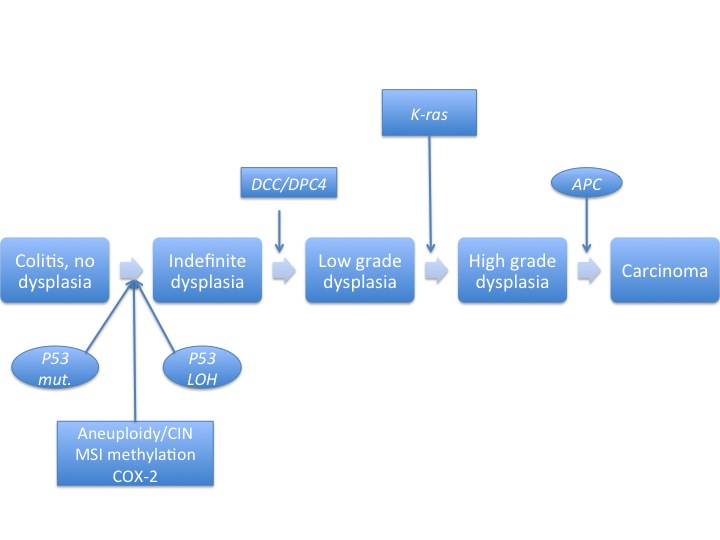Familial adenomatous polyposis natural history, complications and prognosis
|
Familial adenomatous polyposis Microchapters |
|
Differentiating Familial adenomatous polyposis from other Diseases |
|---|
|
Diagnosis |
|
Treatment |
|
Case Studies |
|
Familial adenomatous polyposis natural history, complications and prognosis On the Web |
|
American Roentgen Ray Society Images of Familial adenomatous polyposis natural history, complications and prognosis |
|
FDA on Familial adenomatous polyposis natural history, complications and prognosis |
|
CDC on Familial adenomatous polyposis natural history, complications and prognosis |
|
Familial adenomatous polyposis natural history, complications and prognosis in the news |
|
Blogs on Familial adenomatous polyposis natural history, complications and prognosis |
|
Directions to Hospitals Treating Familial adenomatous polyposis |
Editor-In-Chief: C. Michael Gibson, M.S., M.D. [1] Associate Editor(s)-in-Chief: Sadaf Sharfaei M.D.[2], Mohamad Alkateb, MBBCh [3]
Overview
Natural history
- Familial adenomatous polyposis is a rare disease that usually starts during teenage years.[1]
- Patients with familial adenomatous polyposis usually develop hundreds to thousands colon polyps till early twenties.
- They might be asymptomatic till third decade of their lives or whenever they have malignant transformation to colorectal cancer.
- If they left untreated, almost all of them develop colorectal cancer around 40 years of age.
- They might have polyps in different organs including upper gastrointestinal tract. However, their progression to malignancy is less than colon polyps.
Complications
Complications that can develop as a result of familial adenomatous polyposis are:[2][3]
- Colon cancer which has two different pathways according to defect on APC gene:
- Molecular pathogenesis of sporadic colon cancer

- Molecular pathogenesis of colitis-associated colon cancer

- Duodenal and ampullary cancer:
- They are major causes of death after polypectomy.
- End-viewing and side-viewing duodenoscopy are conducted for surveillance.
Prognosis
- The prognosis of familial adenomatous polyposis is excellent with treatment.
- Without treatment, all patients with familial adenomatous polyposis develop colon cancer at age of 40-50.
References
- ↑ Kennedy, Raelene D.; Potter, D. Dean; Moir, Christopher R.; El-Youssef, Mounif (2014). "The natural history of familial adenomatous polyposis syndrome: A 24year review of a single center experience in screening, diagnosis, and outcomes". Journal of Pediatric Surgery. 49 (1): 82–86. doi:10.1016/j.jpedsurg.2013.09.033. ISSN 0022-3468.
- ↑ Iaquinto, Gaetano; Fornasarig, Mara; Quaia, Michele; Giardullo, Nicola; D'Onofrio, Vittorio; Iaquinto, Salvatore; Di Bella, Simone; Cannizzaro, Renato (2008). "Capsule endoscopy is useful and safe for small-bowel surveillance in familial adenomatous polyposis". Gastrointestinal Endoscopy. 67 (1): 61–67. doi:10.1016/j.gie.2007.07.048. ISSN 0016-5107.
- ↑ King, John E.; Dozois, Roger R.; Lindor, Noralane M.; Ahlquist, David A. (2000). "Care of Patients and Their Families With Familial Adenomatous Polyposis". Mayo Clinic Proceedings. 75 (1): 57–67. doi:10.4065/75.1.57. ISSN 0025-6196.